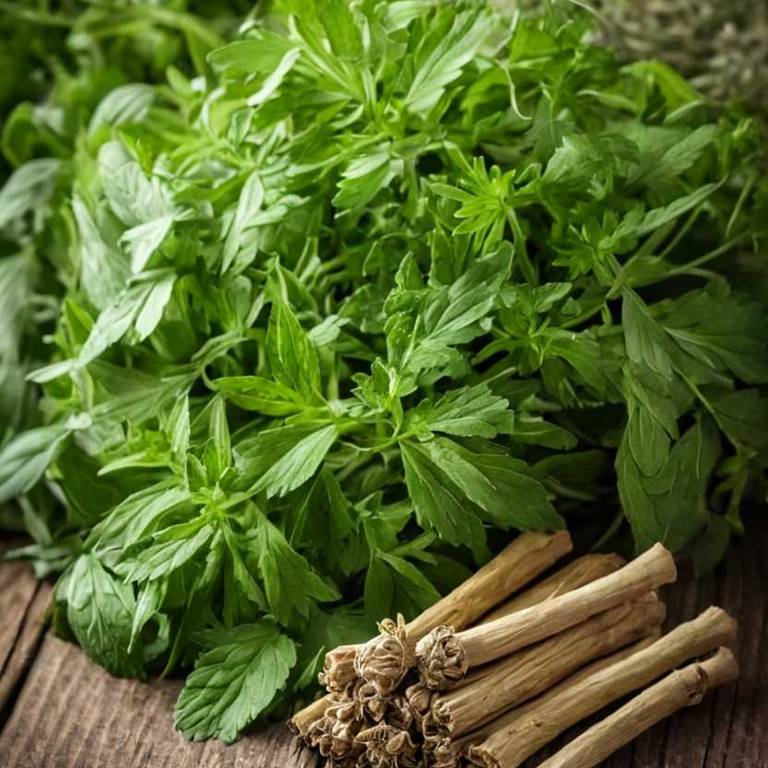Dong Quai (Angelica Sinensis)
Information Reliability Score: 5/10
This score reflects the overall reliability of the information presented in this article. It is based on the quality of scientific evidence, accuracy of sources, and the transparency of references related to Angelica sinensis.

Dong Quai, scientifically known as angelica sinensis, is a traditional medicinal herb widely used in Chinese medicine for its diverse therapeutic properties.
It is revered as an adaptogen and a key spice in traditional Chinese cuisine, valued for its ability to support hormonal balance and overall vitality. The primary benefits of Dong Quai include its role in alleviating menstrual discomfort, enhancing circulation, and promoting skin health due to its rich content of phytoestrogens and antioxidants. Historically, it has been used for centuries in Chinese culture to treat gynecological issues and as a general tonic for strength and longevity.
Today, it is also embraced in modern wellness practices for its potential to support hormonal health and as a natural remedy for menopause symptoms, with its distinctive earthy, slightly sweet flavor making it a unique and sought-after herb.
FREE CHECKLIST
The Only 10 Herbs You Need to Heal 90% of Common Ailments.

Table of Contents
Scientific and Botanical Profile
Dong Quai, with botanical name Angelica sinensis, is a perennial herb native to regions such as China, North Korea, South Korea, Japan, Tibet, Sichuan, Yunnan, Russia, Mongolia, Hebei, Shanxi, and Hubei.
It belongs to the Apiaceae family, commonly known as the carrot or parsley family, and is also referred to as Chinese Angelica, Angelica Root, Female Herbs, and Hang Qi. Morphologically, Dong Quai is characterized by its tall, slender stems that can grow up to 2 meters in height, with compound leaves that are pinnately arranged and have a feathery appearance.
The plant produces small, greenish-yellow flowers in umbrella-shaped clusters, which bloom in late summer, followed by oval-shaped seeds that are dispersed by wind.
History and Cultural Relevance
Dong Quai was used for centuries in traditional Chinese medicine as a key herb for balancing the body's energies and treating a variety of ailments, including menstrual disorders, hormonal imbalances, and digestive issues.
It has a long history dating back to the Han Dynasty, where it was revered for its purported ability to enhance vitality and promote longevity. In traditional Chinese medicine, Dong Quai is often combined with other herbs in formulations to support women's health, particularly during menstruation and menopause, and is also used in rituals to strengthen the body's yang energy. Culturally, it holds significance in Chinese folklore, where it is sometimes associated with stories of longevity and spiritual enlightenment, and is used in certain ceremonies to honor ancestors or celebrate life transitions.
Today, Dong Quai remains a popular herbal remedy, with modern formulations used to support hormonal health, reduce inflammation, and improve circulation, demonstrating its enduring relevance in both traditional and contemporary wellness practices.
Chemical Composition and Nutritional Profile
Dong Quai contains a variety of bioactive compounds, including alkaloids, flavonoids, essential oils, and terpenes, which contribute to its medicinal properties.
It is rich in vitamins such as vitamin K, vitamin C, and B-complex vitamins, along with minerals like calcium, iron, and magnesium. The plant also provides antioxidants that help neutralize free radicals and reduce oxidative stress in the body. Its essential oils, particularly ligustilide and butylphthalide, are believed to support hormonal balance and improve blood circulation.
Mechanistically, these compounds may interact with hormonal pathways and enhance vascular function, making Dong Quai a traditional remedy for menstrual health and circulatory support.
Medicinal Properties and Health Benefits
Angelica sinensis has been widely recognized for its potent medicinal properties, particularly in traditional Chinese medicine, where it is valued for its ability to nourish the blood, regulate menstruation, and strengthen the immune system.
It is known to support the cardiovascular system by improving circulation and reducing cholesterol levels, while also benefiting the respiratory system by alleviating symptoms of asthma and bronchitis. Compared to similar herbs like Rehmannia glutinosa or Paeonia lactiflora, angelica sinensis stands out for its stronger blood-tonifying effects and broader range of systemic benefits, making it more potent in treating conditions related to blood deficiency and hormonal imbalance. Its unique combination of antispasmodic, anti-inflammatory, and antioxidant properties further enhances its therapeutic value, especially in women's health and digestive wellness.
Overall, angelica sinensis offers a comprehensive approach to health, making it a preferred choice in herbal formulations for its holistic and enduring benefits.
Discover the 10 best health benefits of Dong Quai.
Forms, Preparation and Usage
Angelica sinensis has been traditionally used in herbal medicine for its diverse therapeutic properties, available in various forms such as fresh roots, dried roots, tinctures, powders, essential oils, and capsules.
It can be prepared through different methods, including making a tea by steeping dried roots, creating a decoction by simmering the root for extended periods, or using an infusion for more delicate extraction. For topical application, the powdered or infused form can be applied directly to the skin for conditions like muscle pain or inflammation. The recommended dosage for adults is typically 3-6 grams of dried root per day, divided into two or three doses, while children should only use it under medical supervision due to limited safety data.
Due to its potency, it is advisable to use angelica sinensis cautiously, with a short duration of treatment and frequent monitoring to avoid potential adverse effects.
Safety, Side Effects and Contraindications
Angelica sinensis can be a valuable medicinal herb used traditionally for its purported benefits in improving blood circulation, alleviating menstrual disorders, and enhancing overall vitality.
However, it is important to be aware of its potential side effects, which may include gastrointestinal discomfort, allergic reactions, and in some cases, increased bleeding risk due to its potential blood-thinning properties. Angelica sinensis may interact with certain medications, such as anticoagulants or antiplatelet drugs, increasing the risk of bleeding, and it should not be combined with other herbs that have similar effects. Special populations, including pregnant or breastfeeding women, should avoid its use due to limited safety data and potential risks to the fetus or infant, while individuals with chronic illnesses should consult a healthcare provider before use.
To ensure safe use, it is advisable to follow recommended dosages, consult with a qualified healthcare practitioner, and monitor for any adverse reactions.
Growing, Harvesting and Storage
Angelica sinensis grows best in well-drained, loamy soil that is rich in organic matter and slightly acidic to neutral in pH, with full sun to partial shade.
It requires consistent moisture, especially during its growing season, but should not be overwatered to avoid root rot. Regular weeding and mulching help control weeds and maintain soil moisture, while periodic fertilization with a balanced organic fertilizer supports robust growth. Harvesting occurs in the second or third year, typically in the autumn when the plant has matured, by cutting the roots with a spade or garden fork to avoid damaging the stems.
After harvesting, the roots are washed, cut into pieces, and dried in a cool, dark, well-ventilated area to preserve potency, then stored in airtight containers in a cool, dry place or refrigerated to maintain their medicinal properties.